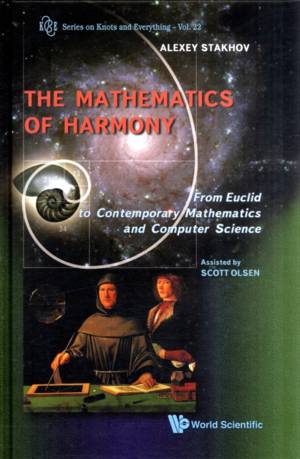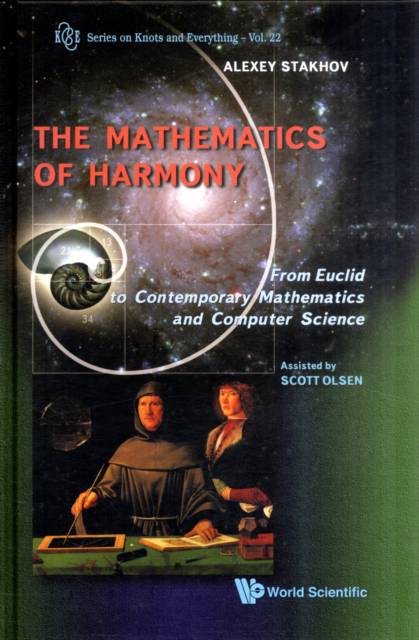
- Afhalen na 1 uur in een winkel met voorraad
- Gratis thuislevering in België vanaf € 30
- Ruim aanbod met 7 miljoen producten
- Afhalen na 1 uur in een winkel met voorraad
- Gratis thuislevering in België vanaf € 30
- Ruim aanbod met 7 miljoen producten
Zoeken
Mathematics of Harmony: From Euclid to Contemporary Mathematics and Computer Science
Alexey Stakhov
€ 404,95
+ 809 punten
Omschrijving
Assisted by Scott Olsen (Central Florida Community College, USA)
This volume is a result of the author's four decades of research in the field of Fibonacci numbers and the Golden Section and their applications. It provides a broad introduction to the fascinating and beautiful subject of the "Mathematics of Harmony," a new interdisciplinary direction of modern science. This direction has its origins in "The Elements" of Euclid and has many unexpected applications in contemporary mathematics (a new approach to a history of mathematics, the generalized Fibonacci numbers and the generalized golden proportions, the "golden" algebraic equations, the generalized Binet formulas, Fibonacci and "golden" matrices), theoretical physics (new hyperbolic models of Nature) and computer science (algorithmic measurement theory, number systems with irrational radices, Fibonacci computers, ternary mirror-symmetrical arithmetic, a new theory of coding and cryptography based on the Fibonacci and "golden" matrices).The book is intended for a wide audience including mathematics teachers of high schools, students of colleges and universities and scientists in the field of mathematics, theoretical physics and computer science. The book may be used as an advanced textbook by graduate students and even ambitious undergraduates in mathematics and computer science.
This volume is a result of the author's four decades of research in the field of Fibonacci numbers and the Golden Section and their applications. It provides a broad introduction to the fascinating and beautiful subject of the "Mathematics of Harmony," a new interdisciplinary direction of modern science. This direction has its origins in "The Elements" of Euclid and has many unexpected applications in contemporary mathematics (a new approach to a history of mathematics, the generalized Fibonacci numbers and the generalized golden proportions, the "golden" algebraic equations, the generalized Binet formulas, Fibonacci and "golden" matrices), theoretical physics (new hyperbolic models of Nature) and computer science (algorithmic measurement theory, number systems with irrational radices, Fibonacci computers, ternary mirror-symmetrical arithmetic, a new theory of coding and cryptography based on the Fibonacci and "golden" matrices).The book is intended for a wide audience including mathematics teachers of high schools, students of colleges and universities and scientists in the field of mathematics, theoretical physics and computer science. The book may be used as an advanced textbook by graduate students and even ambitious undergraduates in mathematics and computer science.
Specificaties
Betrokkenen
- Auteur(s):
- Uitgeverij:
Inhoud
- Aantal bladzijden:
- 748
- Taal:
- Engels
- Reeks:
- Reeksnummer:
- nr. 22
Eigenschappen
- Productcode (EAN):
- 9789812775825
- Verschijningsdatum:
- 1/10/2009
- Uitvoering:
- Hardcover
- Formaat:
- Genaaid
- Afmetingen:
- 170 mm x 249 mm
- Gewicht:
- 1519 g

Alleen bij Standaard Boekhandel
+ 809 punten op je klantenkaart van Standaard Boekhandel
Beoordelingen
We publiceren alleen reviews die voldoen aan de voorwaarden voor reviews. Bekijk onze voorwaarden voor reviews.











